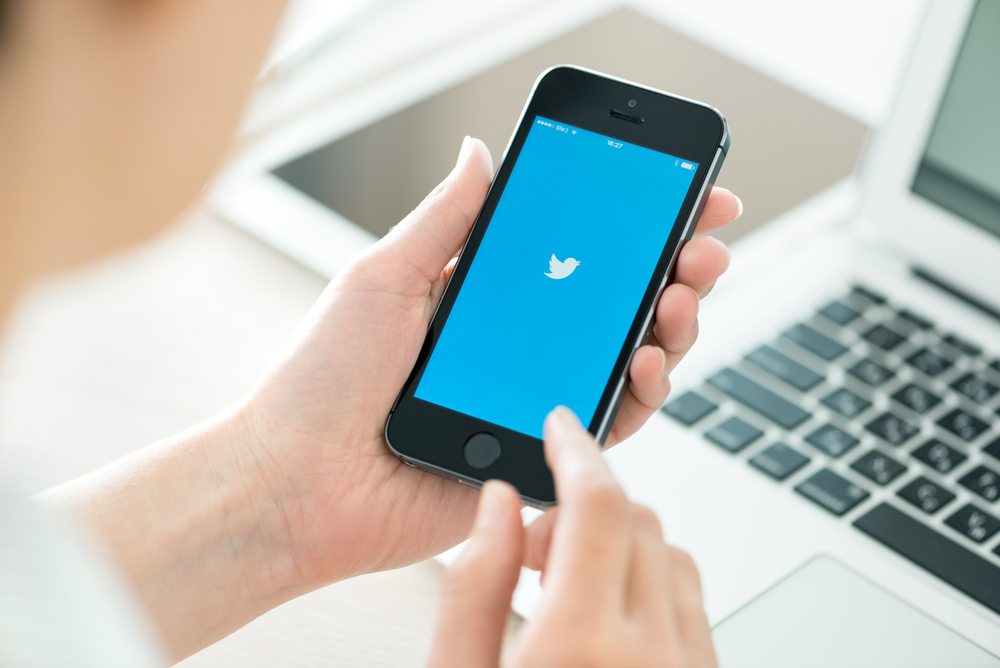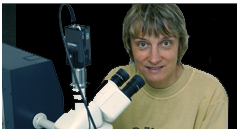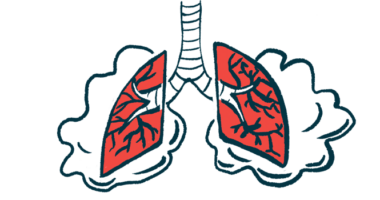New Smartphone Kit Detects Cystic Fibrosis, Arthritis Biomarkers

Dr. Ewa Goldys and research colleagues at the Centre for Nanoscale BioPhotonics (CNBP) at Macquarie University in Sydney have published a research paper in the open access journal Sensors, claiming that diseases such as cystic fibrosis, acute pancreatitis and rheumatoid arthritis can be diagnosed using a newly-developed smartphone-based technology.
The Sensors article, entitled “Medically Relevant Assays with a Simple Smartphone and Tablet Based Fluorescence Detection System“ (Sensors 2015, 15(5), 11653-11664; doi:10.3390/s1505116530 is coauthored by Ewa M. Goldys with Piotr Wargocki, Wei Deng , and Ayad G. Anwer — all of the ARC Centre of Excellence in Nanoscale Biophotonics at Macquarie University in North Ryde, New South Wales, Australia.
 The article is featured in the Sensors Special Issue “Smartphone-Based Sensors for Non-Invasive Physiological Monitoring,“ whose Guest Editor, Prof. Dr. Ki H. Chon, a professor of Biomedical Engineering at the University of Connecticut at Storrs, whose own most recent research has focused on the development of wireless, wearable, and low-cost monitoring devices for detection of cardiac malignant arrhythmia — work that has received NIH funding and a $1.9 million grant from the U.S. Army. Dr. Chon notes that “Smartphones have become so ubiquitous that they are being used as virtually wearable monitors, including heart rate and activity monitoring. By taking advantage of the smartphone’s processing power, peripheral noninvasive and cost-effective sensors, and wireless communications capabilities, recent efforts have been made to create various medical applications for self-monitoring.”
The article is featured in the Sensors Special Issue “Smartphone-Based Sensors for Non-Invasive Physiological Monitoring,“ whose Guest Editor, Prof. Dr. Ki H. Chon, a professor of Biomedical Engineering at the University of Connecticut at Storrs, whose own most recent research has focused on the development of wireless, wearable, and low-cost monitoring devices for detection of cardiac malignant arrhythmia — work that has received NIH funding and a $1.9 million grant from the U.S. Army. Dr. Chon notes that “Smartphones have become so ubiquitous that they are being used as virtually wearable monitors, including heart rate and activity monitoring. By taking advantage of the smartphone’s processing power, peripheral noninvasive and cost-effective sensors, and wireless communications capabilities, recent efforts have been made to create various medical applications for self-monitoring.”
That’s what the paper coauthors set out to do, explaining that cellphones and smartphones can be reconfigured as biomedical sensor devices but usually this requires specialized add-ons. In the paper they present a simple cellphone-based portable bioassay platform, which can be used with fluorescent assays in solution. The system consists of a tablet, a polarizer, a smartphone (serving as a camera) and a box providing dark readout conditions.
The assay in a well plate is placed on the tablet screen acting as an excitation source, while a polarizer on top of the well plate separates excitation light from assay fluorescence emission, enabling assay readout with a smartphone camera. The assay result is obtained by analyzing the intensity of image pixels in an appropriate color channel. With this device, the CNBP scientists carried out two types of assays with the smartphone kit, detecting the enzymes collagenase and trypsin. Fluorescein served as the fluorescent biomarker for collagenase and trypsin. The results of the collagenase assay with the lowest measured concentration of 3.75 g/mL and 0.938 g in total in the sample were comparable to those obtained by a micro plate reader. The lowest measured amount of trypsin was 930 pg — comparable to the low detection limit of 400 pg for this assay obtained in a microplate reader.
The importance of these two enzymes includes monitoring of trypsin levels in newborn babies, since increased levels can be an indicator for cystic fibrosis. The CNBP team reports that a typical trypsin level for a healthy child below one year of age is less than 200 g/l. Levels of 200-1000 g/l are an indication for more tests. Persons suffering from the disease have a deficiency in the transport of trypsin and other digestive enzymes produced in the pancreas. “With our low detection limit of 3.72 ng/mL the smart phone device is over 50 times more sensitive than what is required for the detection of cystic fibrosis,” Dr. Goldys explains in an Optics.org report.
The paper coauthors found the device is sensitive enough to be used in point-of-care medical diagnostics of clinically relevant conditions, including arthritis, cystic fibrosis and acute pancreatitis. The detection range of interest for cystic fibrosis application is between 200 ng/ml and 1800 ng/ml.
Dr. Goldys, who has made presentations at various SPIE (Society of Photo-Optical Instrumentation Engineers) conferences, has been a long-term International Member of Photonics4Life (a key European consortium in Biophotonics), and several EU COST actions, and leads a vibrant research team of early career researchers and postgraduate students. She is also a dedicated mentor of research fellows.
Professor Goldys has pioneered a number of ultra-sensitive analysis methods of non-invasive label-free characterization of biological samples as tools for biology and health diagnostics. This research addresses the problem of how to extract subtle biochemical information available in autofluorescence images of cells and tissues. This methodology turned out to be very powerful; in particular it has been possible to differentiate yeast strains and accurately identify percentage mixtures in mixed cultures. Prof. Goldys has also developed an automated reagent-free method for cellular characterization able to distinguish between subpopulations of cells based on autofluorescence microscopy that allows determination of different cell subtypes within a large population. Characterization is based upon the detection and quantification of various metabolites by their natural properties without any chemical interference, and this patented method provides a collective metabolic fingerprint which can be used to distinguish healthy from dysregulated cells in a variety of diseases, including cancer and other conditions.
She has made major contributions to fluorescent labeling, a key optical technique to characterize cells and tissues by characterizing and developing applications of specialized fluorescent nanoparticles. Research has been focused on developing new functionalities such as long fluorescence lifetime and fluorescence upconversion — an important labeling modality that makes it possible to excite the cells/tissues in the near infrared (where the transparency of biological media is optimal) and to observe the signal at much shorter wavelengths so that autofluorescence background can be minimized. This led to the first successful demonstration of fluorescence upconversion in nanoparticles (2006) and a sequence of works concerned with optical characterization of lanthanide-doped nanoparticles, including publications in Nature Nanotechnology (2013) and Nature Photonics (2014).
Because of the near-ubiquity of smartphones and tablets these days above-noted by UConn’s Prof. Ki Chon, the CNBP researchers believe the approach they’ve developed has huge potential for application in point-of-care medical diagnostics — particularly for use in remote or developing areas where professional expertise and expensive research laboratory equipment are typically either scarce or unavailable.
 The CNBP group are among several research teams working on low-cost, widely deployable optical medical diagnostic systems based on consumer electronic devices. Another notable example being a University of California, Los Angeles (UCLA) group led by Dr. Aydogan Ozcan. The Ozcan Bio- and Nano-Photonics Laboratory’s dominant research objective is to introduce fundamentally new imaging and sensing architectures that can compensate in the digital domain for the lack of complexity of optical components by use of novel theories and numerical algorithms to address immediate needs and requirements of Telemedicine for Global Health Problems. In a nutshell, through innovation the researchers aim to create photonics based telemedicine technologies toward next generation smart global health systems.
The CNBP group are among several research teams working on low-cost, widely deployable optical medical diagnostic systems based on consumer electronic devices. Another notable example being a University of California, Los Angeles (UCLA) group led by Dr. Aydogan Ozcan. The Ozcan Bio- and Nano-Photonics Laboratory’s dominant research objective is to introduce fundamentally new imaging and sensing architectures that can compensate in the digital domain for the lack of complexity of optical components by use of novel theories and numerical algorithms to address immediate needs and requirements of Telemedicine for Global Health Problems. In a nutshell, through innovation the researchers aim to create photonics based telemedicine technologies toward next generation smart global health systems.
Dr. Ozcan’s research team is strongly focused on photonics and its applications to nano and bio-technology, including but not limited to (a) imaging the nano-world, especially in bio-compatible settings; (b) providing powerful solutions to global health related problems such as measurement of the cell count of HIV patients in resource limited settings; (c) rapid and parallel detection of hundreds of thousands of molecular level binding events targeting microarray based proteomics and genomics; and (d) monitoring of the biological state of 3D engineered tissues. The lab recently demonstrated an on-chip microscopy technique capable of detecting individual particles below 100 nm in size across a field-of-view of 20.5 square millimeters — an improvement of more than two orders of magnitude compared to other nanoimaging techniques, according to the team. The work was published in the journal Nature Photonics.
Prof. Ozcan holds 30 issued patents (all of which are licensed) and another >20 pending patent applications for his inventions in nanoscopy, wide-field imaging, lensless imaging, nonlinear optics, fiber optics, and optical coherence tomography. He has given more than 250 invited talks and is also the author of one book, the co-author of more than 400 peer reviewed research articles in major scientific journals and conferences. In addition, he is the founder and a member of the Board of Directors of the mobile diagnostic device firm Holomic LLC. Dr. Ozcan is also an elected Fellow of SPIE and OSA, and is a Senior Member of IEEE, a Member of LEOS, EMBS, AAAS and BMES. HE was also selected as one of the top 10 innovators by the U.S. Department of State, USAID, NASA, and NIKE as part of the LAUNCH: Health Forum organized in October 2010, and received the 2012 World Technology Award on Health and Medicine, which is presented by the World Technology Network in association with TIME, CNN, AAAS, Science, Technology Review, Fortune, Kurzweil and Accelerosity.
The CBNP Macquarie researchers have developed a biosensing app for smartphones, scheduled to be available for free download beginning June 15. The app promises to convert smartphones into assay readout devices similar in principle to a clinical plate reader.
 Dr. Goldys expects rapid uptake of the smartphone technology for biomedical diagnostics. The CBNP researchers say the technology is largely platform-independent, with Apple and Android devices equally suited to diagnostic tasking. Key parameters determining device suitability include screen brightness, color [gamut] and screen polarization. The researchers note that some devices will require adaptation, since the panels in some mobile devices (notably iPads) produce light polarized at a 45-degree angle, so a polarizer must be set up properly in order for the device excitation light to be fully compensated for.
Dr. Goldys expects rapid uptake of the smartphone technology for biomedical diagnostics. The CBNP researchers say the technology is largely platform-independent, with Apple and Android devices equally suited to diagnostic tasking. Key parameters determining device suitability include screen brightness, color [gamut] and screen polarization. The researchers note that some devices will require adaptation, since the panels in some mobile devices (notably iPads) produce light polarized at a 45-degree angle, so a polarizer must be set up properly in order for the device excitation light to be fully compensated for.
The free biosensing app for smartphones will be available for download from June 15 at this CNBP web page:
https://www.cnbp.org.au/smartphone_biosensing
Sources:
Centre for Nanoscale BioPhotonics (CNBP)
Macquarie University
Sensors
University of Connecticut
Optics.org
Ozcan Bio- and Nano-Photonics Laboratory, University of California, Los Angeles (UCLA)
Image Credits:
Centre for Nanoscale BioPhotonics (CNBP)
University of California, Los Angeles (UCLA)
University of Connecticut







